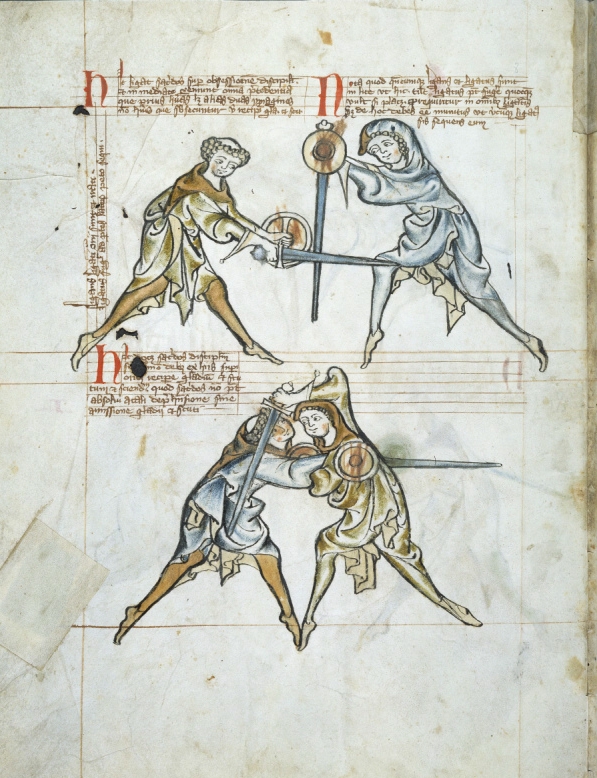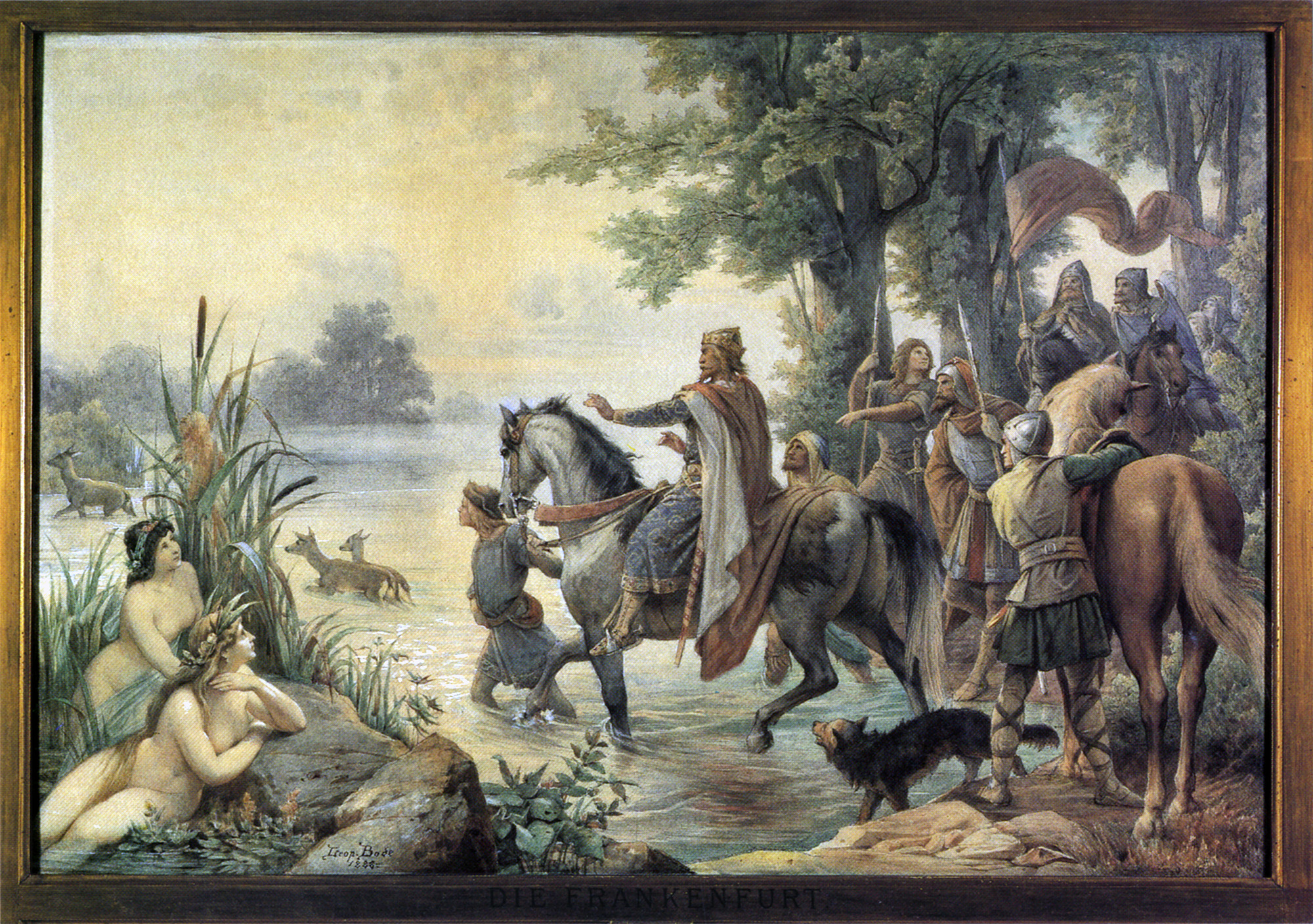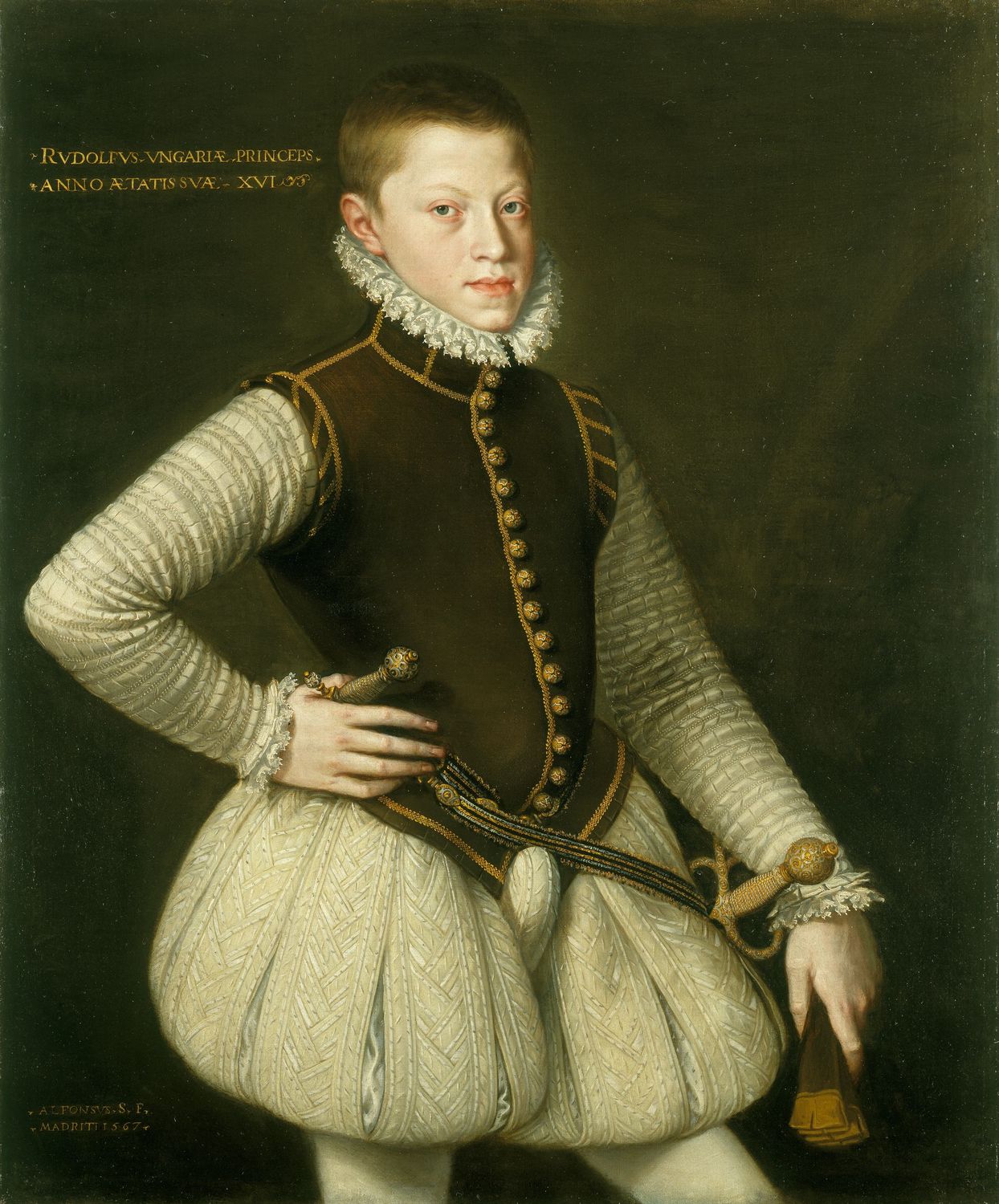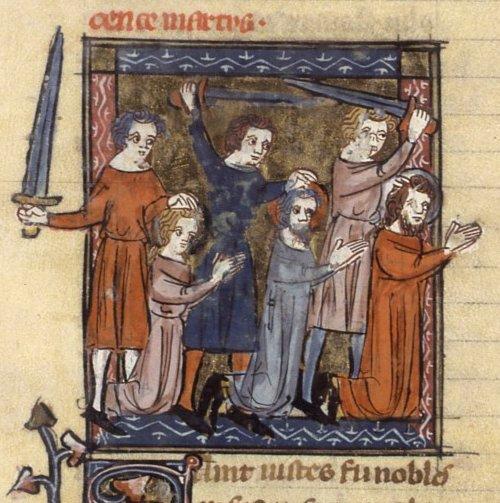|
Freifechter
The ''Freifechter'' or ''Federfechter'' (''Freifechter von der Feder zum Greifenfels'') were a fencing guild founded around 1570 in Prague. They were known, from early in their existence, to be skilled, rivalling the Marx brothers who for the best part of a century had held a monopoly. In 1575 they were admitted by the council of Frankfurt in spite of the Marx brothers's protests, and on 7 March 1607, they were officially recognised by Rudolf II, although they had been acknowledged to be equally capable long before. While ''Freifechter'' means "free fencer" (cf. "free lancer"), the reference to "feather" (''Feder'') in the full name of the guild is unclear, though it is believed that it was derived from the name of Saint Vitus, who is often depicted with a feather. In their ''Deutsches Wörterbuch'', the Brothers Grimm hold it plausible that it derives from the custom of pinning feathers to one's hat or lance, but the coat of arms accorded to the brotherhood by Rudolf II displays t ... [...More Info...] [...Related Items...] OR: [Wikipedia] [Google] [Baidu] |
German School Of Swordsmanship
The German school of fencing (') is a system of combat taught in the Holy Roman Empire during the Late Medieval, German Renaissance, and early modern periods. It is described in the contemporary Fechtbücher ("fencing books") written at the time. The geographical center of this tradition was in what is now Southern Germany including Augsburg, Frankfurt, and Nuremberg. During the period in which it was taught, it was known as the ', or the ''"Art of Fighting"''. The German school of fencing focuses primarily on the use of the two-handed longsword; it also describes the use of many other weapons, including polearms, medieval daggers, messers (with or without a buckler), and the staff, as well as describing mounted combat and unarmed grappling ('' ringen''). Most authors of writings on the system are, or claim to be, in the tradition of the 14th-century master Johannes Liechtenauer. The earliest surviving treatise on Liechtenauer's system is a manuscript dated to possibly ... [...More Info...] [...Related Items...] OR: [Wikipedia] [Google] [Baidu] |
Historical European Martial Arts
Historical European martial arts (HEMA) are martial arts of European origin, particularly using arts formerly practised, but having since died out or evolved into very different forms. While there is limited surviving documentation of the martial arts of classical antiquity (such as Greek wrestling or gladiatorial combat), most of the surviving dedicated technical treatises or martial arts manuals date to the late medieval period and the early modern period. For this reason, the focus of HEMA is ''de facto'' on the period of the half-millennium of ca. 1300 to 1800, with a German, Italian, and Spanish school flowering in the Late Middle Ages and the Renaissance (14th to 16th centuries), followed by French, English, and Scottish schools of fencing in the modern period (17th and 18th centuries). Martial arts of the 19th century such as classical fencing, and even early hybrid styles such as Bartitsu, may also be included in the term HEMA in a wider sense, as may tradition ... [...More Info...] [...Related Items...] OR: [Wikipedia] [Google] [Baidu] |
Prague
Prague ( ; ) is the capital and List of cities and towns in the Czech Republic, largest city of the Czech Republic and the historical capital of Bohemia. Prague, located on the Vltava River, has a population of about 1.4 million, while its Prague metropolitan area, metropolitan area is home to approximately 2.3 million people. Prague is a historical city with Romanesque architecture, Romanesque, Czech Gothic architecture, Gothic, Czech Renaissance architecture, Renaissance and Czech Baroque architecture, Baroque architecture. It was the capital of the Kingdom of Bohemia and residence of several Holy Roman Emperors, most notably Charles IV, Holy Roman Emperor, Charles IV (r. 1346–1378) and Rudolf II, Holy Roman Emperor, Rudolf II (r. 1575–1611). It was an important city to the Habsburg monarchy and Austria-Hungary. The city played major roles in the Bohemian Reformation, Bohemian and the Protestant Reformations, the Thirty Years' War and in 20th-century history a ... [...More Info...] [...Related Items...] OR: [Wikipedia] [Google] [Baidu] |
Marx Brothers (fencing)
The Brotherhood of Saint Mark (, Marx brothers) was the name of an organization of German swordsmen in the 16th century. History The brotherhood originated in the 15th century, but it is not known when exactly it was founded. Hans Talhoffer may have been an early member, or even one of the founders (the lion of St Mark appears in his coat of arms in a manuscript of 1459). The earliest certain attestation dates to 1474. The group held an annual meeting in Frankfurt, where they elected their captain (''Hauptmann''). In 1487, Frederick III granted them the monopoly on the title "master of the long sword" (''Meister des langen Schwerts''), effectively making them a fencers' guild. This title was relevant for the Landsknechts, because a certified "master of the long sword" wielding the Zweihänder was entitled to twice the pay of a normal soldier ( Doppelsöldner). The earliest reference to the brotherhood calls them the brotherhood of Our dear lady and pure Virgin Mary and the ... [...More Info...] [...Related Items...] OR: [Wikipedia] [Google] [Baidu] |
Frankfurt
Frankfurt am Main () is the most populous city in the States of Germany, German state of Hesse. Its 773,068 inhabitants as of 2022 make it the List of cities in Germany by population, fifth-most populous city in Germany. Located in the foreland of the Taunus on its namesake Main (river), Main, it forms a continuous conurbation with Offenbach am Main; Frankfurt Rhein-Main Regional Authority, its urban area has a population of over 2.7 million. The city is the heart of the larger Rhine-Main metropolitan region, which has a population of more than 5.8 million and is Germany's Metropolitan regions in Germany, second-largest metropolitan region after the Rhine-Ruhr metropolitan region, Rhine-Ruhr region and the List of EU metropolitan regions by GDP#2021 ranking of top four German metropolitan regions, fourth largest metropolitan region by GDP in the European Union (EU). Frankfurt is one of the ''de facto'' four main capitals of the European Union (alongside Brussels, Luxembourg Cit ... [...More Info...] [...Related Items...] OR: [Wikipedia] [Google] [Baidu] |
Rudolf II, Holy Roman Emperor
Rudolf II (18 July 1552 – 20 January 1612) was Holy Roman Emperor (1576–1612), King of Hungary and Kingdom of Croatia (Habsburg), Croatia (as Rudolf I, 1572–1608), King of Bohemia (1575–1608/1611) and Archduke of Austria (1576–1608). He was a member of the House of Habsburg. Rudolf's legacy has traditionally been viewed in three ways:Hotson, 1999. an ineffectual ruler whose mistakes led directly to the Thirty Years' War; a great and influential patron of Northern Mannerism, Northern Mannerist art; and an intellectual devotee of occult arts and learning which helped seed what would be called the Scientific Revolution. Determined to unify Christendom, he initiated the Long Turkish War (1593–1606) with the Ottoman Empire. Exhausted by war, his citizens in Kingdom of Hungary (1526-1867), Hungary revolted in the Bocskai uprising, Bocskai Uprising, which led to more authority being given to his brother Matthias, Holy Roman Emperor, Matthias. Under his reign, there was ... [...More Info...] [...Related Items...] OR: [Wikipedia] [Google] [Baidu] |
Saint Vitus
Vitus (), whose name is sometimes rendered Guy or Guido, was a Christian martyr from Sicily. His surviving hagiography is pure legend. The dates of his actual life are unknown.Basil Watkins, ''The Book of Saints: A Comprehensive Biographical Dictionary'', 8th rev. ed. (Bloomsbury, 2016), p. 758.Donald Attwater, ''The Avenel Dictionary of Saints'' (Avenel Books, 1981), p. 338. He has for long been tied to the Sicilian martyrs Modestus and Crescentia but in the earliest sources it is clear that these were originally different traditions that later became combined.David Hugh Farmer, ''The Oxford Dictionary of Saints'', 5th rev. ed. (Oxford University Press, 2011), s.v. "Vitus (Guy), Modestus, and Crescentia". The figures of Modestus and Crescentia are probably fictitious. According to his hagiography, he died during the Diocletianic Persecution in AD 303. In the Middle Ages, he was counted as one of the Fourteen Holy Helpers. In Germany, his feast was celebrated with dancing be ... [...More Info...] [...Related Items...] OR: [Wikipedia] [Google] [Baidu] |
Deutsches Wörterbuch
The ''Deutsches Wörterbuch'' (; "German Dictionary"), abbreviated ''DWB'', is the largest and most comprehensive dictionary of the German language in existence.Synopsis of the ''Deutsches Wörterbuch'' at the Language Research Centre, Berlin-Brandenburg Academy of Sciences and Humanities, retrieved 27 June 2012.Clifford Wunderlich ''Deutsches Wörterbuch von Jacob und Wilhelm Grimm'' , Andover-Harvard Theological Library, Harvard University Divinity School, April 2012. retrieved 27 June 2012. Encompassing modern |
Brothers Grimm
The Brothers Grimm ( or ), Jacob Grimm, Jacob (1785–1863) and Wilhelm Grimm, Wilhelm (1786–1859), were Germans, German academics who together collected and published folklore. The brothers are among the best-known storytellers of Oral tradition, folktales, popularizing stories such as "Cinderella" ("), "The Frog Prince (story), The Frog Prince" (""), "Hansel and Gretel" ("), "Town Musicians of Bremen" (""), "Little Red Riding Hood" (""), "Rapunzel", "Rumpelstiltskin" (""), "Sleeping Beauty" (""), and "Snow White" (""). Their first collection of folktales, ''Grimms' Fairy Tales, Children's and Household Tales'' (), was first published in 1812. The Brothers Grimm spent their formative years in the town of Hanau in the Landgraviate of Hesse-Kassel. Their father's death in 1796 (when Jacob was 11 and Wilhelm 10) caused great poverty for the family and affected the brothers many years after. Both brothers attended the University of Marburg, where they developed a curiosity about ... [...More Info...] [...Related Items...] OR: [Wikipedia] [Google] [Baidu] |
Johann Fischart
Johann Baptist Fischart (c. 1545 – 1591) was a German satirist and publicist. Biography Fischart was born, probably, at Strasbourg (but according to some accounts at Mainz), in or about the year 1545, and was educated at Worms in the house of Kaspar Scheid, whom in the preface to his ''Eulenspiegel'' he mentions as his cousin and preceptor. He appears to have travelled in Italy, the Netherlands, France, and England, and on his return to have taken the degree of ''doctor juris'' at Basel. Most of his works were written from 1575 to 1581. During this period, he lived with, and probably was associated in the business of, his sister's husband, Bernhard Jobin, a printer at Strasbourg who published many of Fischart's books. In 1581, Fischart was attached as advocate to the Reichskammergericht (imperial court of appeal) at Speyer. In 1583, he married and was appointed ''Amtmann'' (magistrate) at Forbach near Saarbrücken. He died there in the winter of 1590–1591. Influence Thi ... [...More Info...] [...Related Items...] OR: [Wikipedia] [Google] [Baidu] |
Gargantua
''La vie tres horrifique du grand Gargantua, père de Pantagruel jadis composée par M. Alcofribas abstracteur de quinte essence. Livre plein de Pantagruelisme'' according to 's 1542 edition, or simply Gargantua, is the second novel by François Rabelais, published in 1534 or 1535. Similar in structure to ''Pantagruel'' (1532), but written in a more complex style, it recounts the years of apprenticeship and the warlike exploits of the giant Gargantua. A plea for a Humanism, humanist culture against the ponderousness of a rigid Sorbonne (building), Sorbonnard education, ''Gargantua'' is also a novel full of verve, lexical richness, and often crude writing. Rabelais published ''Gargantua'' under the same pseudonym as ''Pantagruel'': Alcofribas Nasier (an anagram of François Rabelais), “abstractor of quinte essence”. Summary Prologue The novel opens with an appeal to the reader to be benevolent, announcing the comic nature of the work. This exhortation was prompted by t ... [...More Info...] [...Related Items...] OR: [Wikipedia] [Google] [Baidu] |
Mercury (mythology)
Mercury (; ) is a major god in Roman religion and mythology, being one of the 12 Dii Consentes within the ancient Roman pantheon. He is the god of financial gain, commerce, eloquence, messages, communication (including divination), travelers, boundaries, luck, trickery, and thieves; he also serves as the guide of souls to the underworld and the "messenger of the gods". In Roman mythology, he was the son of Maia, one of the seven daughters of the Titan Atlas, and Jupiter. In his earliest forms, he appears to have been related to the Etruscan deity Turms; both gods share characteristics with the Greek god Hermes. He is often depicted holding the caduceus in his left hand. Similar to his Greek equivalent Hermes, he was awarded a magic wand by Apollo, which later turned into the caduceus, the staff with intertwined snakes. Etymology The name "Mercury" is possibly related to the Latin words '' merx'' ("merchandise"; cf. ''merchant'', ''commerce'', etc.), ' (''to tr ... [...More Info...] [...Related Items...] OR: [Wikipedia] [Google] [Baidu] |







